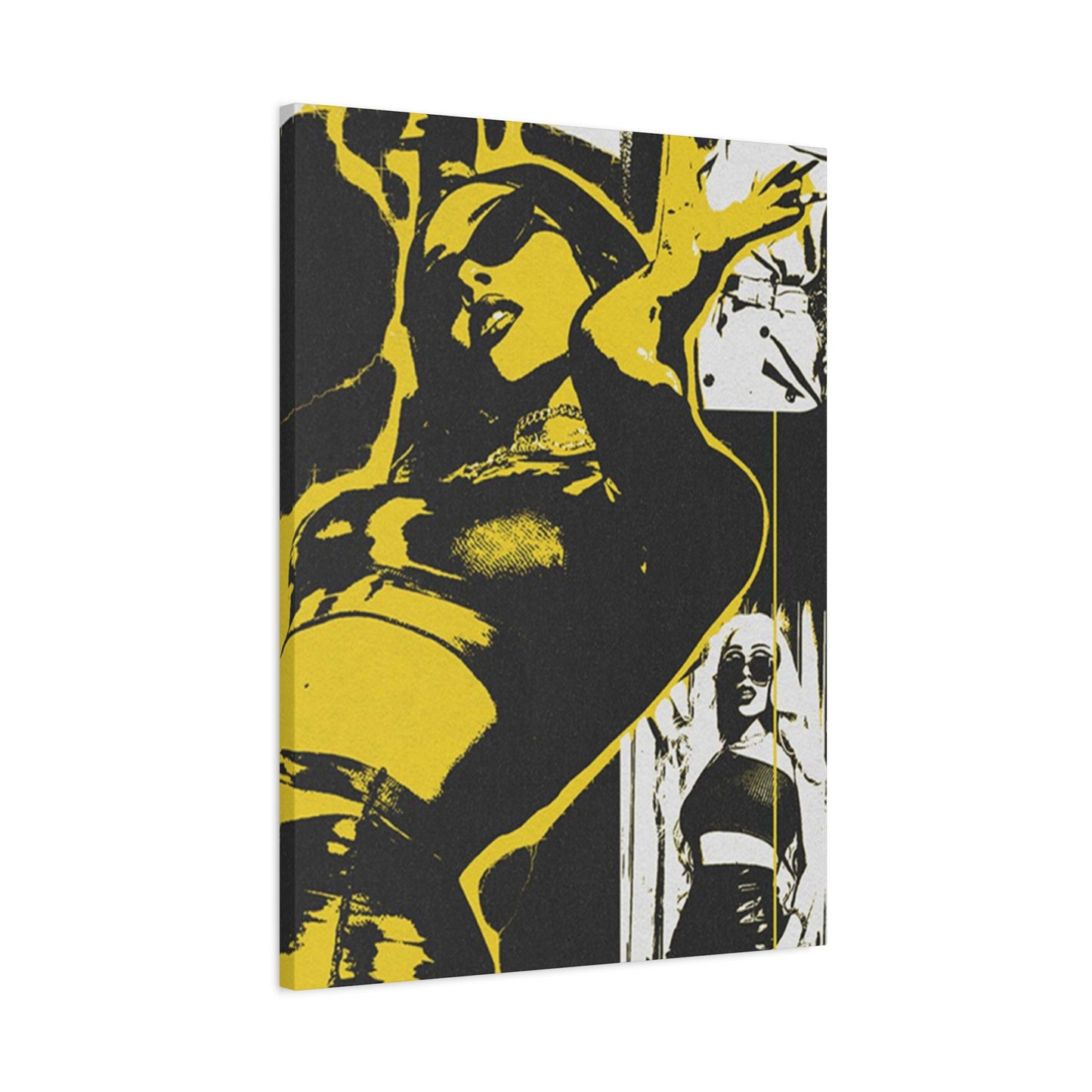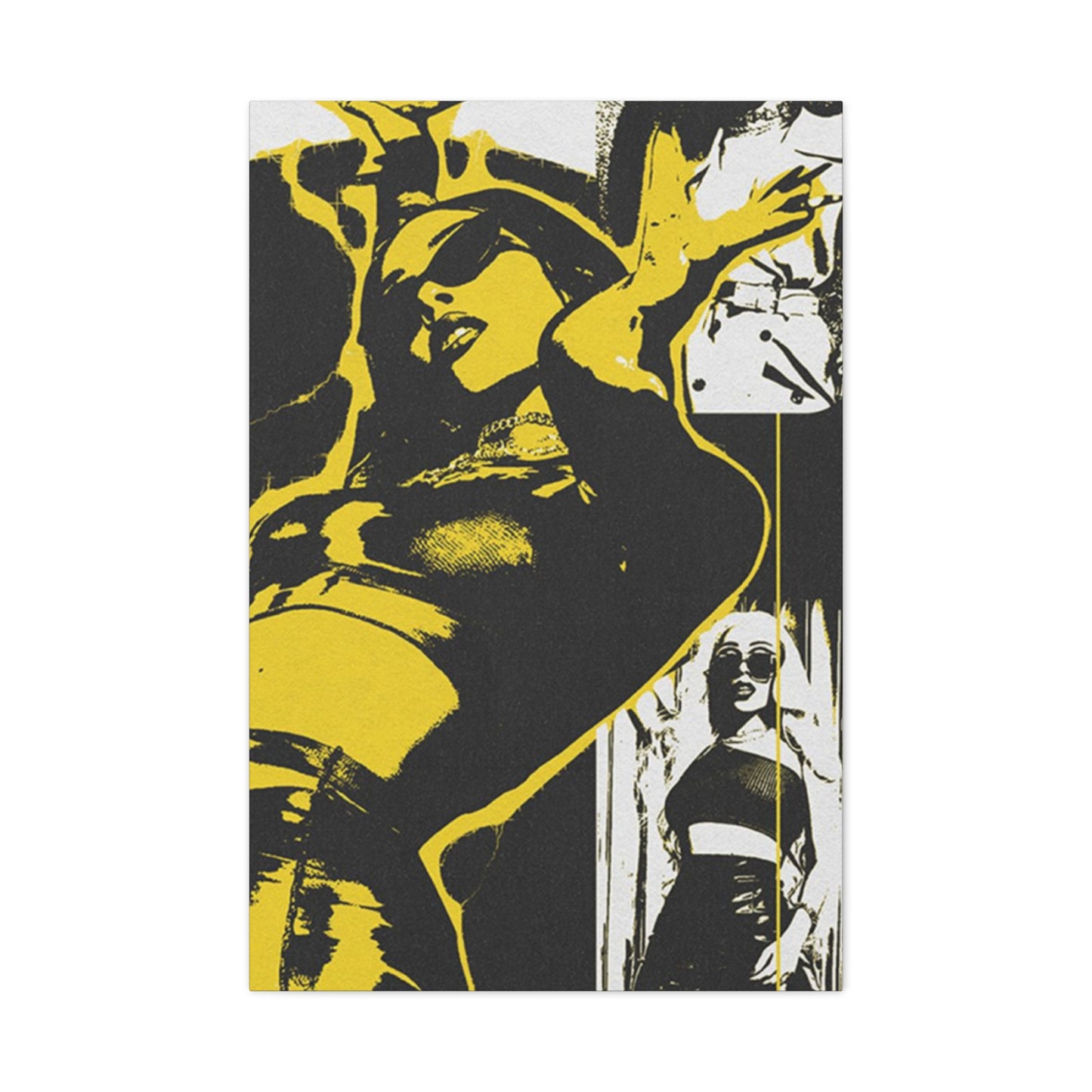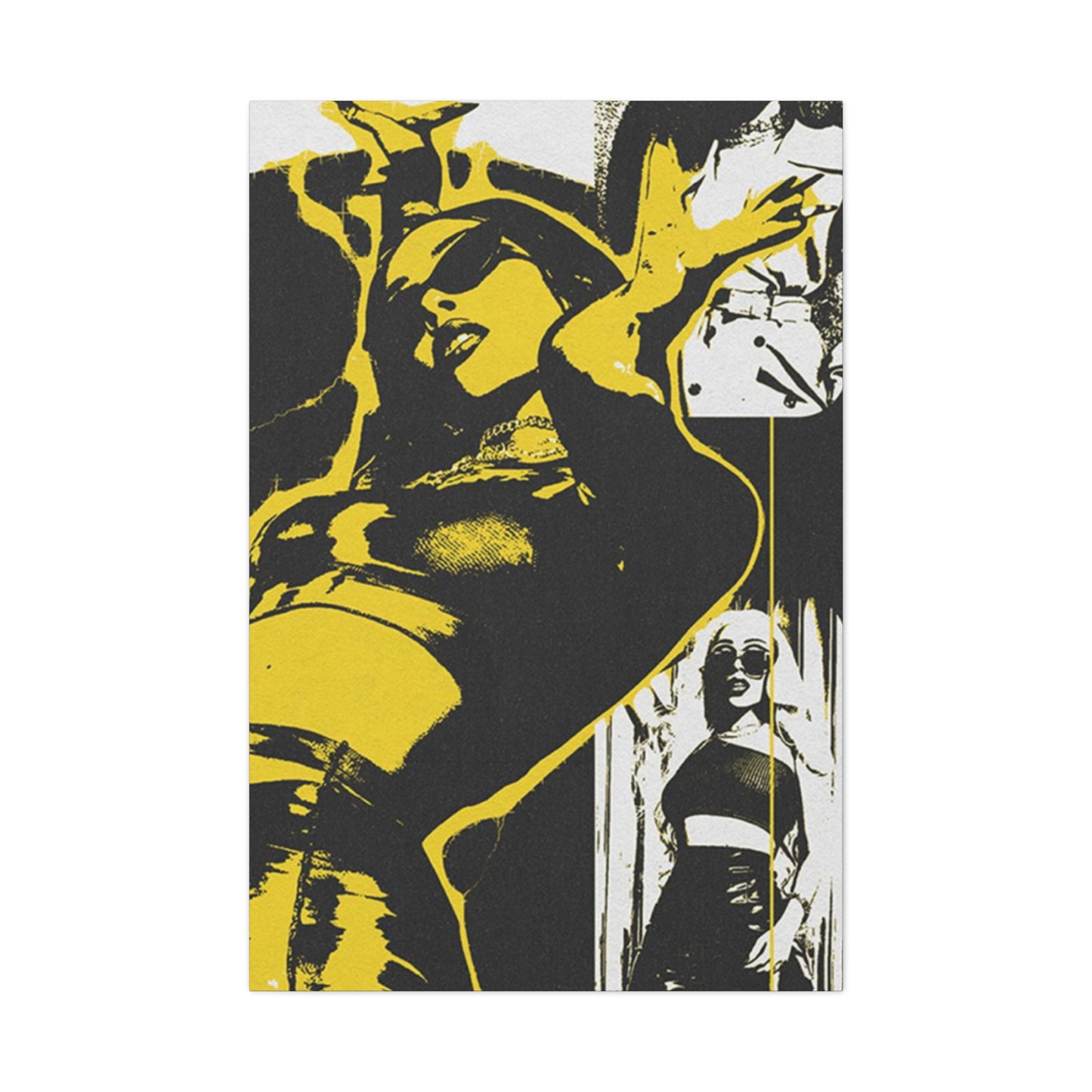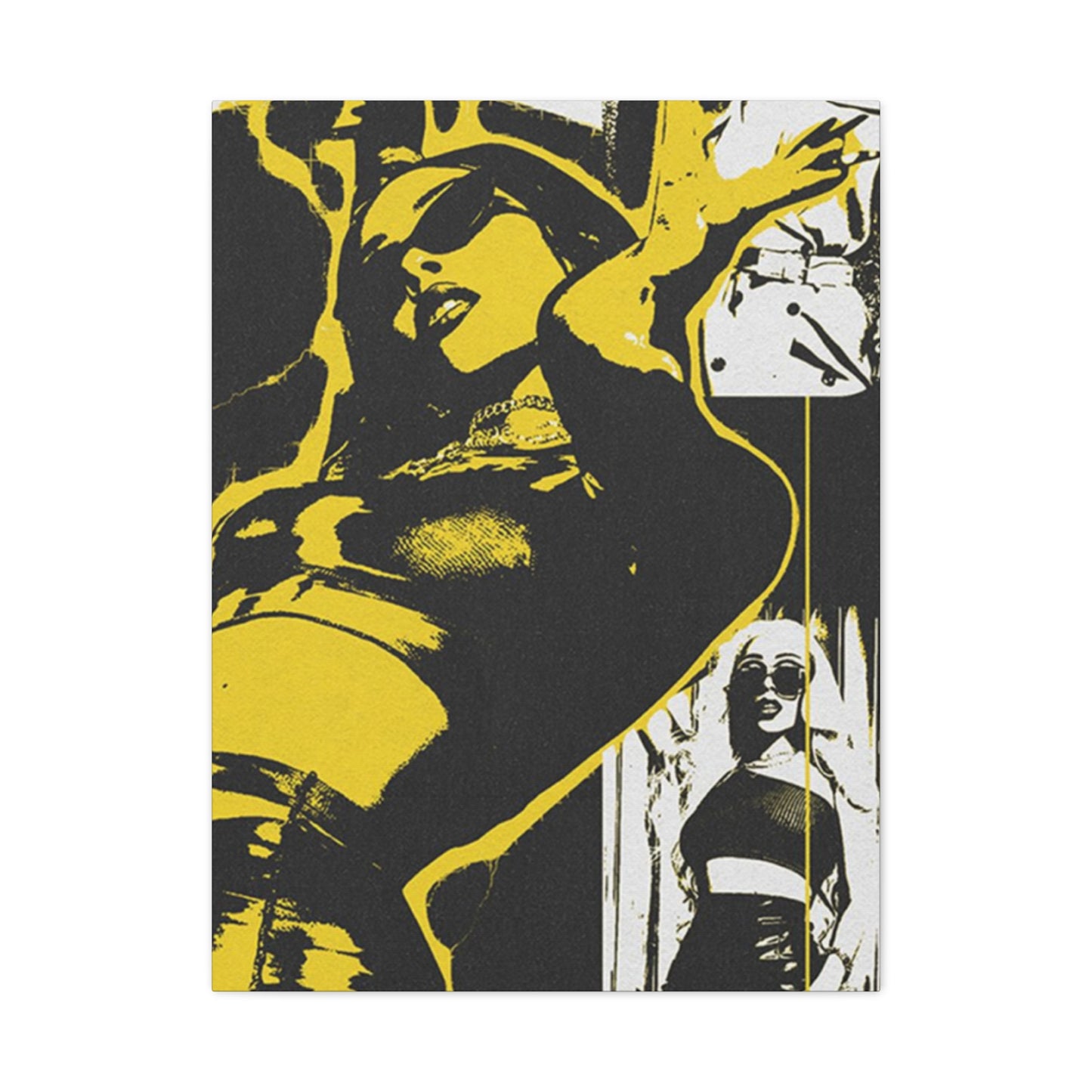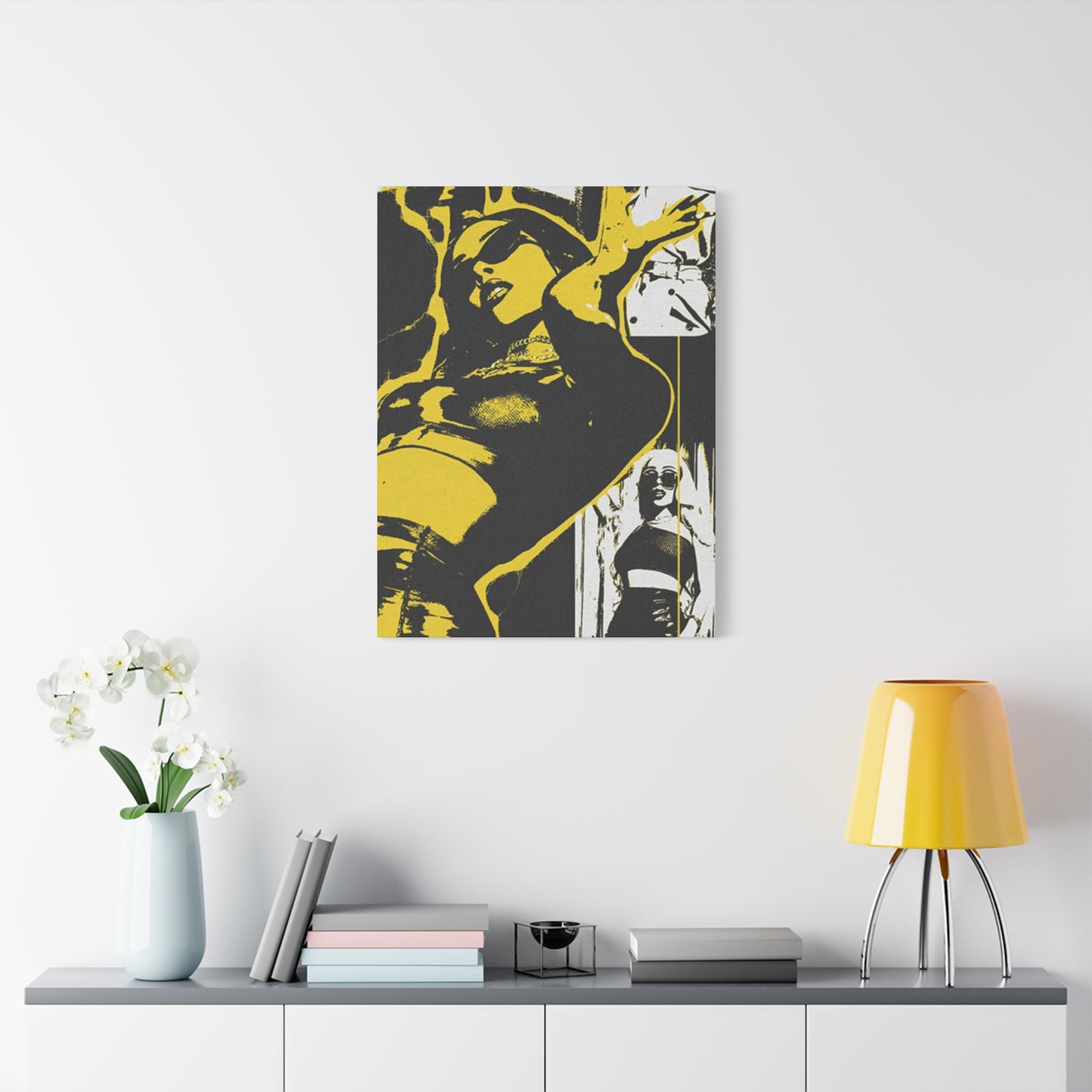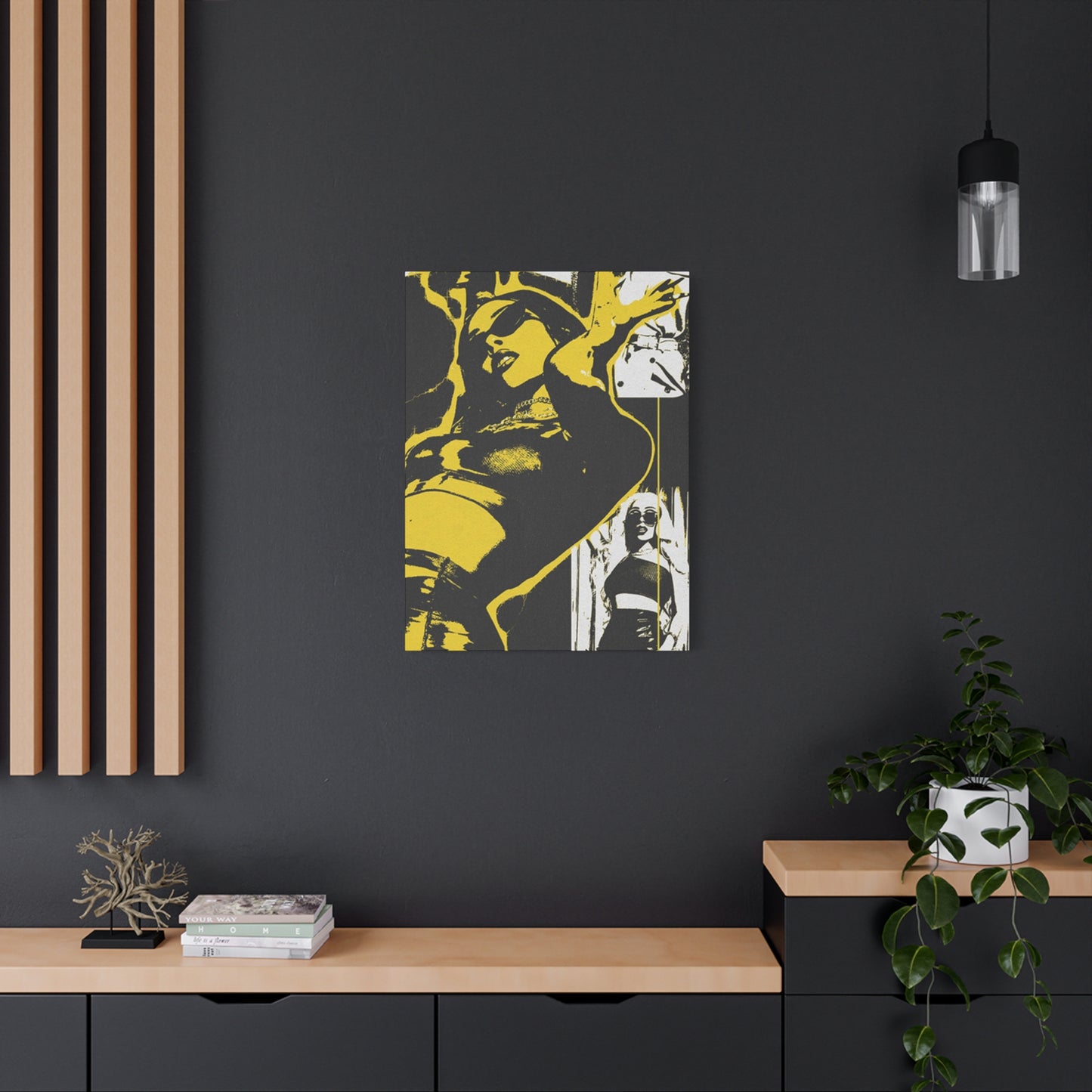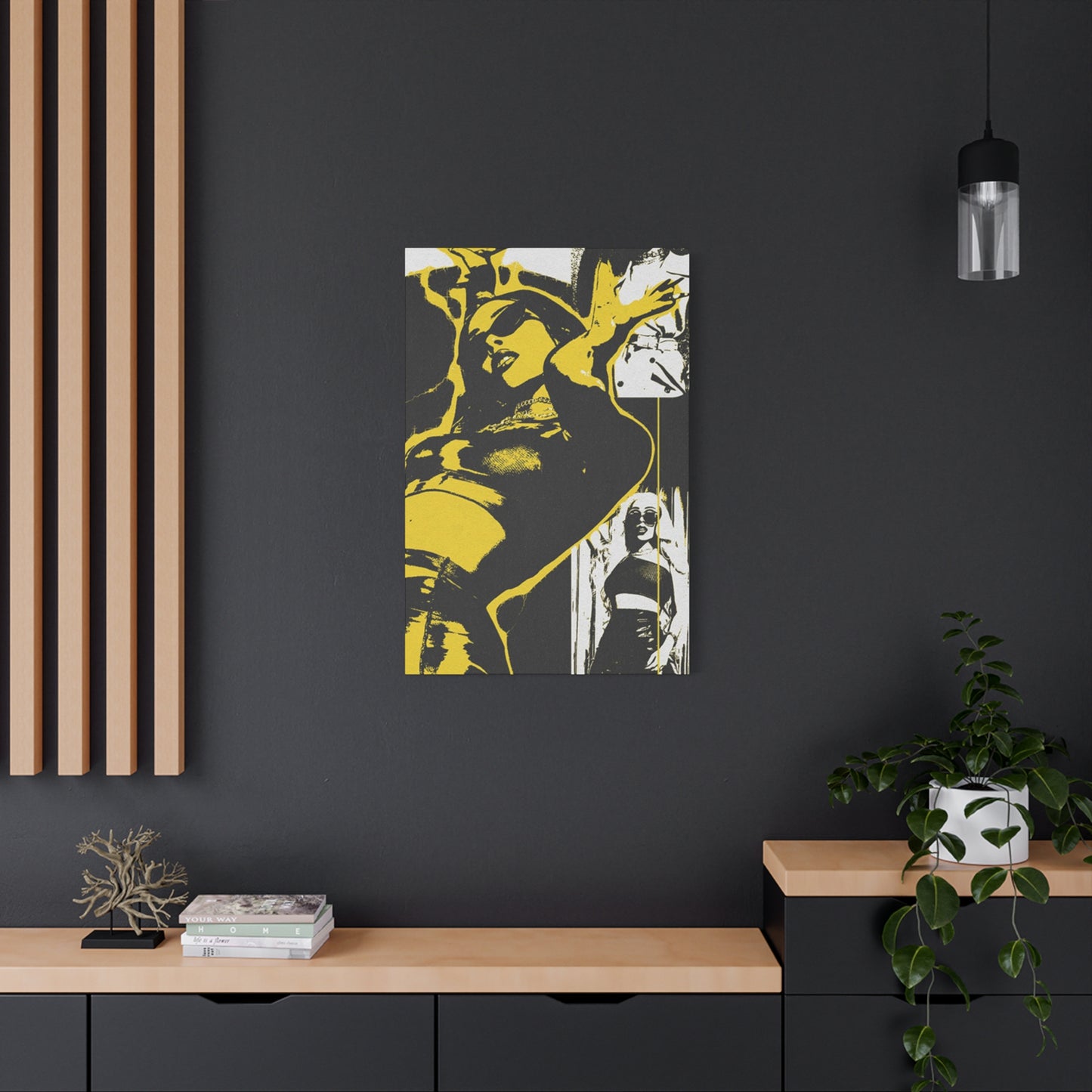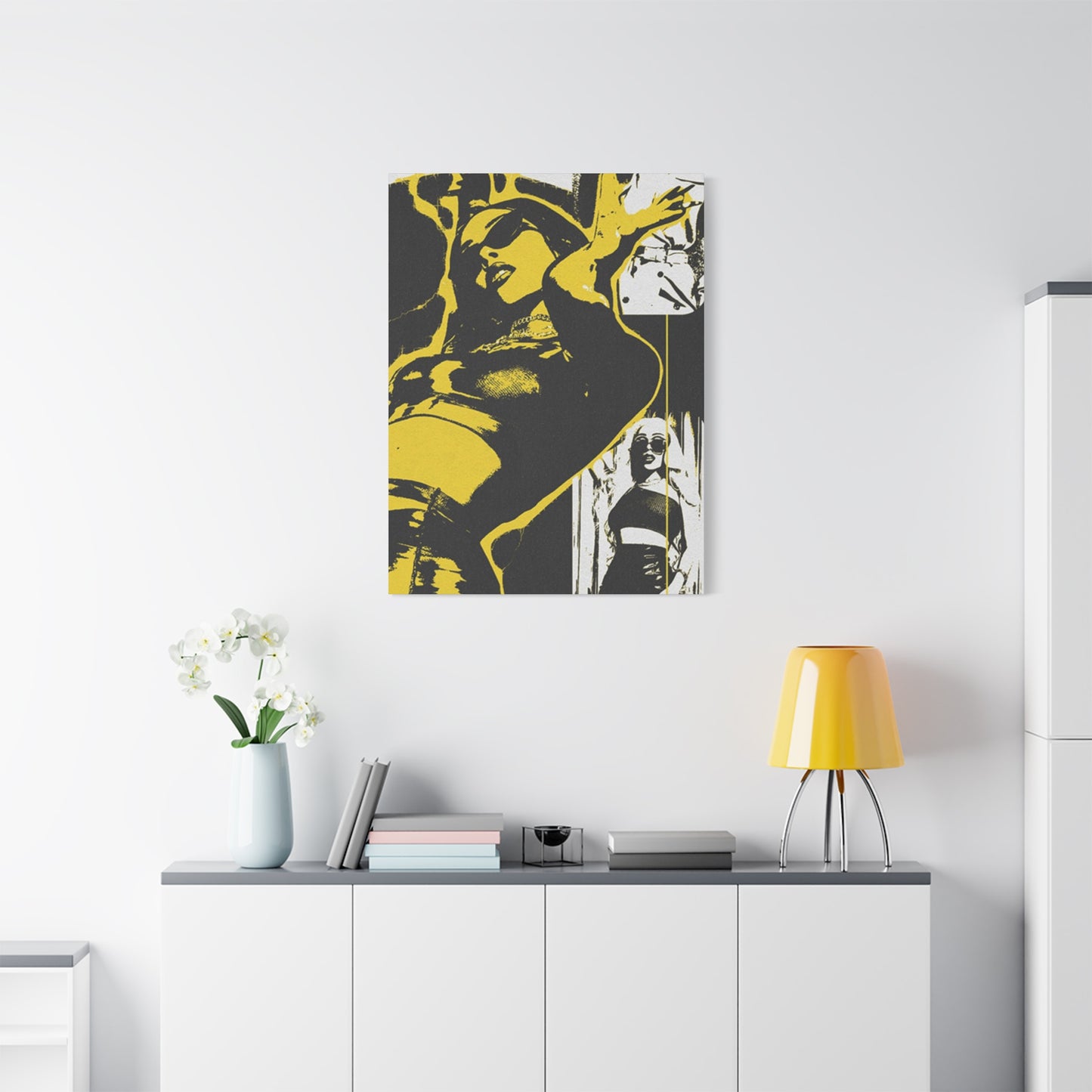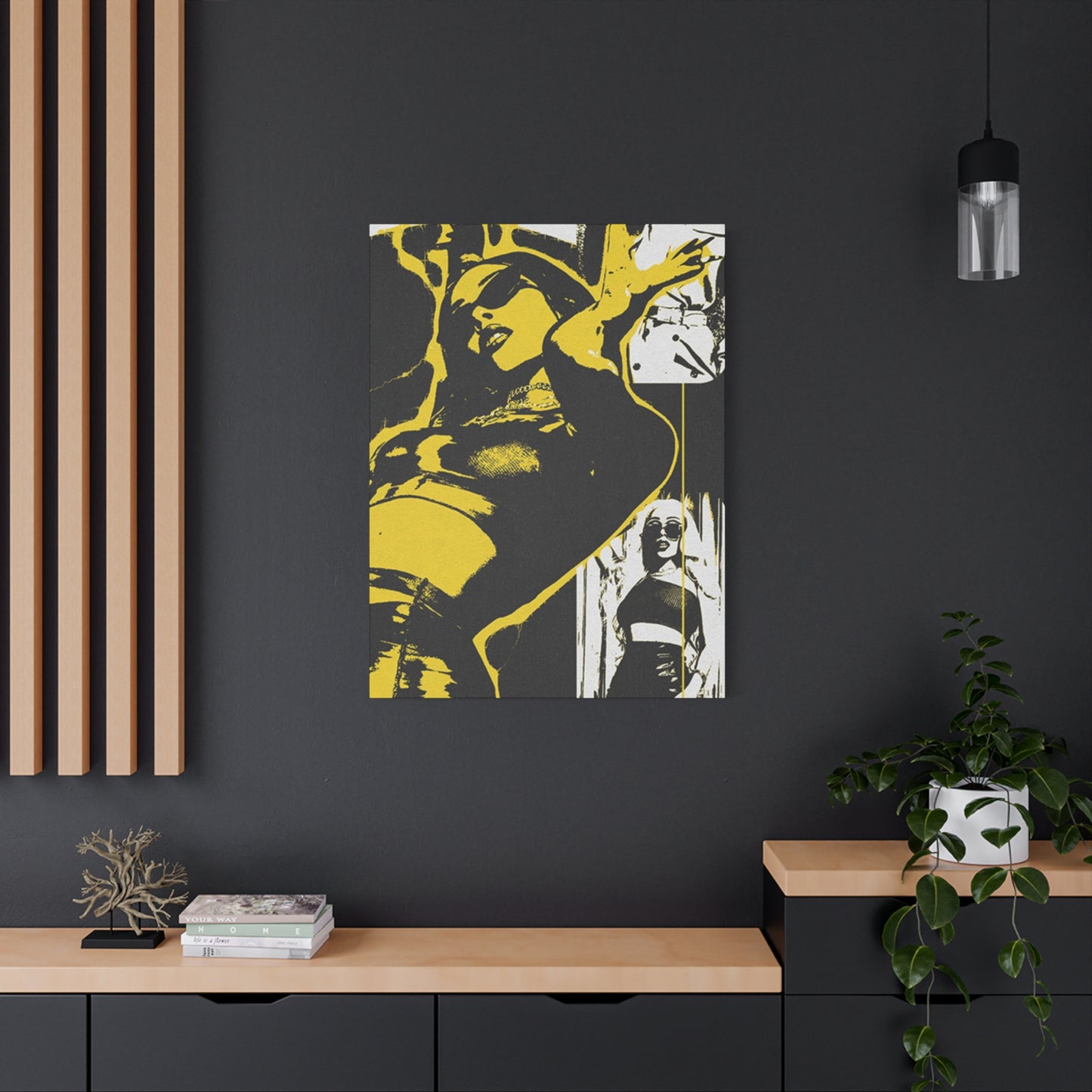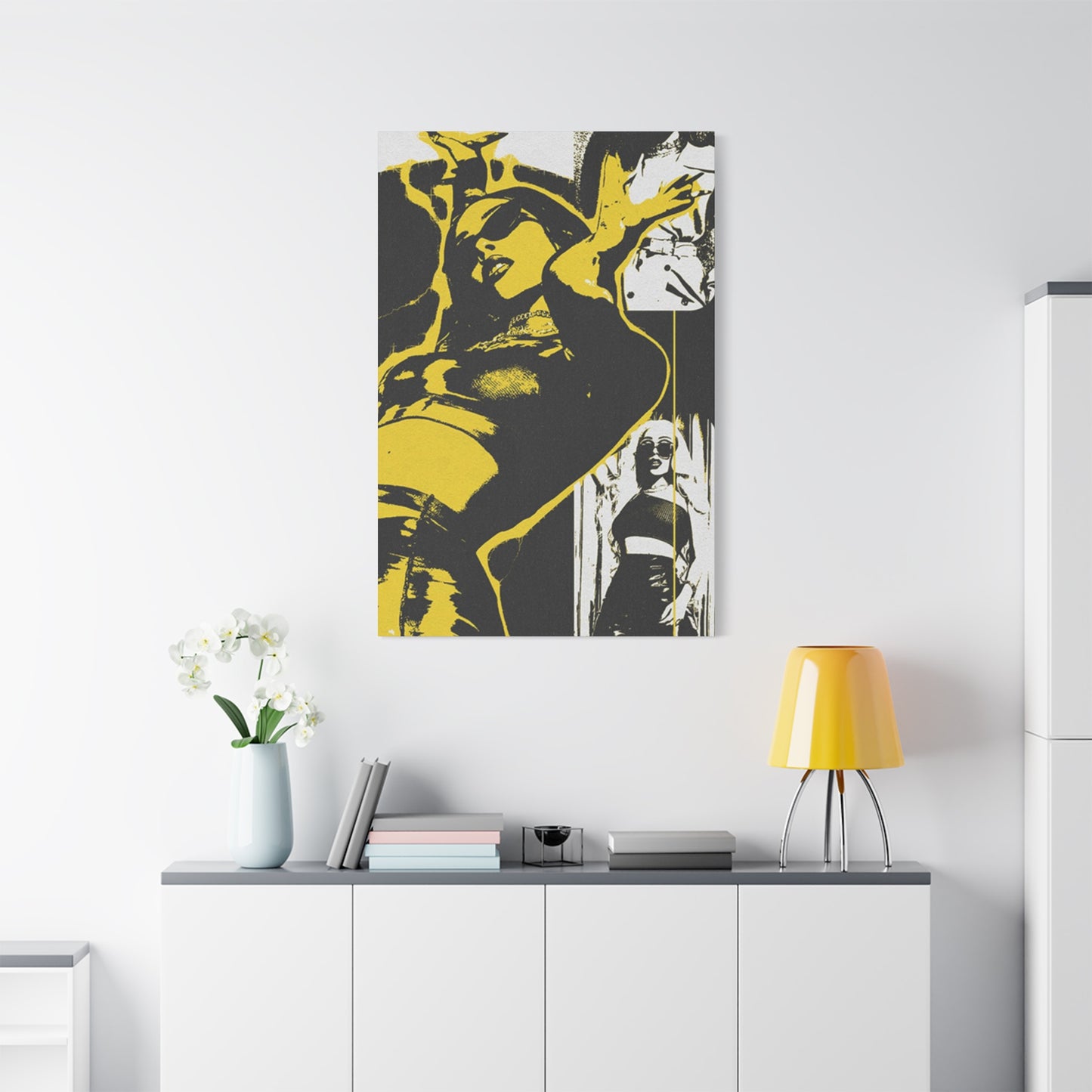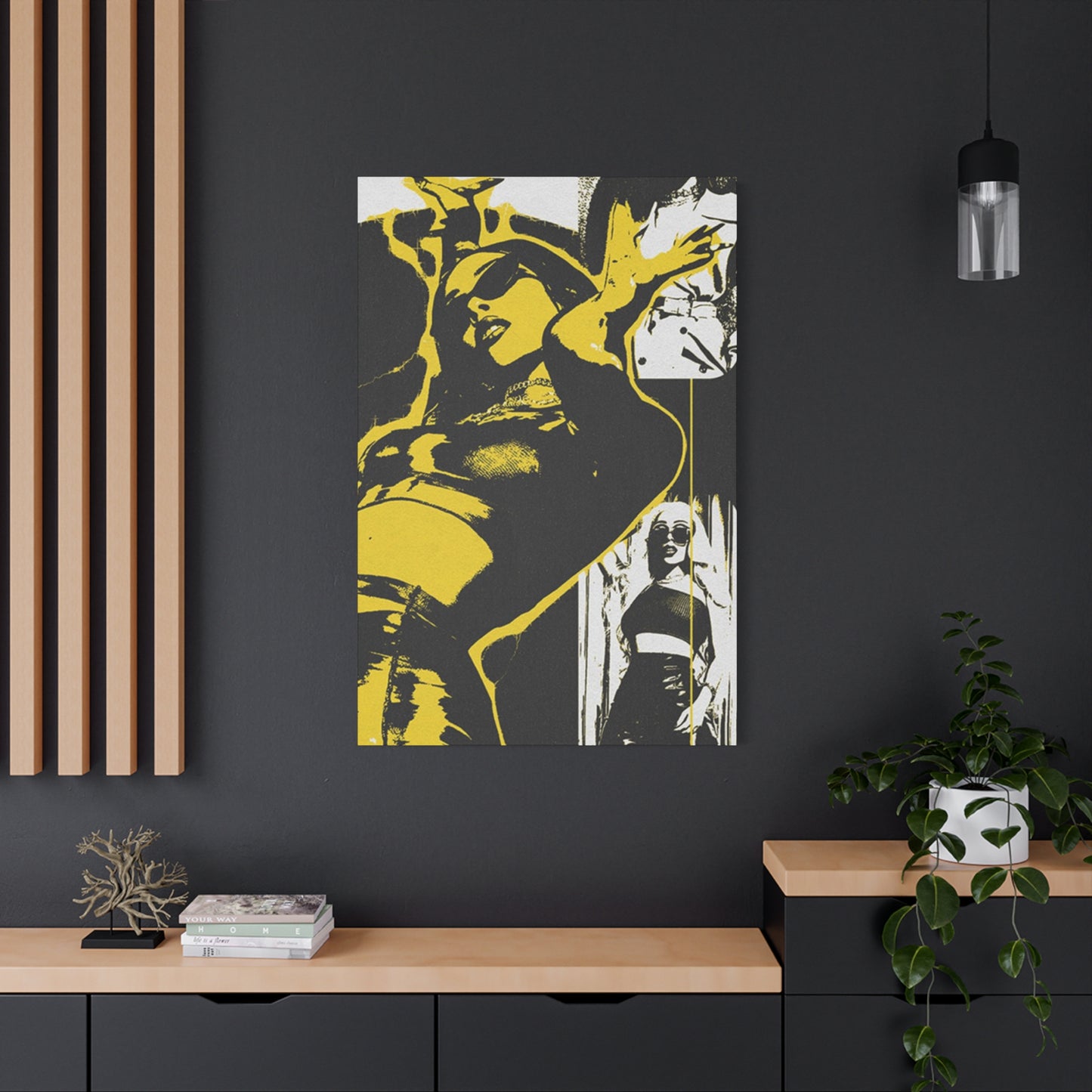Vibrant Girl Party Wall Art: Creative Abstract and Mixed Media Techniques for Celebratory Paintings
The world of artistic expression has always been deeply connected to human emotions and experiences, with celebrations and joyous occasions serving as powerful sources of inspiration for creators across generations. When it comes to capturing the essence of festive gatherings and youthful exuberance, few artistic approaches offer the same level of creative freedom and emotional impact as abstract and mixed media techniques applied to celebratory themes. The art of creating vibrant pieces that embody the energy and excitement of girl parties represents a unique intersection of contemporary artistic methods and timeless themes of friendship, joy, and celebration.
Modern artists have discovered that the combination of abstract painting techniques with mixed media elements provides an exceptional platform for expressing the dynamic and multifaceted nature of celebratory moments. These artistic approaches allow creators to move beyond traditional representational boundaries, embracing spontaneity, color experimentation, and textural exploration to convey emotions that might otherwise remain intangible. The resulting artworks serve not only as decorative elements but as powerful reminders of joy, friendship, and the importance of celebration in human experience.
The popularity of party-themed artistic creations has grown significantly in recent years, driven by both social media culture and a renewed appreciation for personalized, handmade decorative elements. Artists and craft enthusiasts alike have embraced the challenge of translating the ephemeral nature of celebratory moments into lasting visual representations that can be enjoyed long after the festivities have ended. This artistic movement has given rise to innovative techniques that blend traditional painting methods with contemporary materials and approaches, resulting in pieces that are both visually striking and emotionally resonant.
Understanding the psychological impact of color, texture, and composition becomes crucial when creating artwork intended to capture and convey celebratory energy. Research has shown that certain color combinations and visual elements can trigger positive emotional responses and evoke memories of joyful experiences. Artists working in this genre often draw upon these principles to create pieces that not only please the eye but also contribute to positive emotional environments in homes, studios, and social gathering places.
The technical aspects of creating successful party-themed abstract and mixed media pieces involve mastering various artistic techniques while maintaining the spontaneous and energetic qualities that define celebratory art. This requires a balance between planned composition and intuitive creation, allowing for both intentional design elements and unexpected discoveries that often emerge during the creative process. Artists must develop skills in color theory, composition, texture creation, and material manipulation while remaining open to the serendipitous moments that can elevate a piece from merely decorative to truly expressive.
Contemporary mixed media art offers unprecedented opportunities for experimentation and innovation in the realm of celebratory artwork. The availability of new materials, adhesives, and surface preparations has expanded the possibilities for creating complex, layered compositions that can incorporate everything from traditional pigments to unconventional elements like fabric, paper, found objects, and digital prints. This expanded palette of materials allows artists to create rich, tactile surfaces that invite closer examination and create visual interest from multiple viewing distances.
The process of creating party-themed artwork often begins with gathering inspiration from actual celebratory experiences, photographs, memories, and emotional associations with festivities. Artists may collect visual references, color swatches, texture samples, and other materials that capture the essence of the celebratory experience they wish to convey. This preliminary research phase often proves crucial in developing a personal artistic vocabulary that can be drawn upon during the creative process.
Professional artists and hobbyists alike have found that creating party-themed artwork offers unique therapeutic and expressive benefits. The act of translating joyful memories and positive emotions into visual form can serve as a form of artistic meditation, helping creators connect with their own experiences of celebration while developing technical skills and creative confidence. Many artists report that working on celebratory themes helps them maintain a positive outlook and provides an outlet for expressing joy and optimism even during challenging periods.
The market for party-themed artwork has expanded significantly, with collectors, homeowners, and businesses seeking pieces that contribute to positive, energetic environments. This demand has created opportunities for artists to develop specialized practices focused on celebratory themes, often leading to commission work for event planners, party venues, and individuals seeking personalized celebratory artwork. The commercial viability of this artistic niche has encouraged more artists to explore party themes and develop expertise in the specific techniques that make celebratory artwork successful.
Educational institutions have also recognized the value of party-themed art projects in teaching fundamental artistic skills while engaging students with relatable and enjoyable subject matter. Art educators have found that students often respond enthusiastically to assignments that allow them to explore celebratory themes, leading to increased engagement and more successful learning outcomes. These educational applications have contributed to the development of structured approaches to teaching abstract and mixed media techniques through party-themed projects.
The digital age has brought new dimensions to party-themed artwork, with artists incorporating digital elements, printing techniques, and hybrid approaches that combine traditional media with contemporary technology. Social media platforms have provided new venues for sharing and marketing party-themed artwork, while digital tools have expanded the possibilities for planning compositions, experimenting with color schemes, and documenting the creative process. These technological influences have enriched rather than replaced traditional techniques, offering artists additional tools for exploration and expression.
Abstract Art: Capturing Girl Party Energy
Abstract art provides an ideal medium for expressing the dynamic, emotional, and sensory aspects of girl party celebrations. The non-representational nature of abstract painting allows artists to focus on the essential qualities of celebratory experiences rather than literal depictions of party elements. Through color, form, movement, and texture, abstract pieces can convey the excitement, friendship, laughter, and joy that characterize memorable party moments.
The process of creating abstract party-themed artwork begins with identifying the core emotional and sensory elements that define the celebratory experience. Artists must consider the rhythm of music, the warmth of friendship, the excitement of anticipation, and the satisfaction of shared joy. These intangible qualities become the foundation for artistic decisions regarding color palette, brushwork, composition, and overall visual approach.
Color psychology plays a fundamental role in abstract party art, with warm and vibrant hues often taking precedence over cooler or muted tones. Pink, purple, gold, and bright accent colors frequently appear in girl party-themed pieces, reflecting both traditional color associations and the natural color preferences that emerge in celebratory contexts. However, successful abstract party art requires more than simply applying bright colors; it demands understanding how colors interact, create visual energy, and contribute to overall compositional success.
Movement becomes another crucial element in abstract party art, with brushstrokes, color transitions, and compositional elements working together to create a sense of dynamic energy. Artists may employ techniques such as gestural brushwork, dripping, spattering, or scraping to create visual movement that mirrors the physical and emotional movement present in celebratory gatherings. The goal is to create visual rhythms that echo the musical and social rhythms of party experiences.
Layering techniques prove particularly effective in abstract party art, allowing artists to build complex surfaces that reveal different elements depending on viewing distance and lighting conditions. Base layers may establish overall color relationships and compositional structure, while subsequent layers add detail, contrast, and surface interest. This layering approach mirrors the complexity of party experiences, where multiple simultaneous activities, conversations, and emotions create rich, multifaceted experiences.
The scale and format of abstract party pieces require careful consideration, with larger works often proving more effective at conveying the expansive energy of celebratory gatherings. However, smaller intimate pieces can capture more subtle aspects of party experiences, such as quiet moments of connection between friends or the gentle satisfaction of successful celebration. Artists must consider the intended display context and audience when determining appropriate scale and format.
Spontaneity and intuition play important roles in successful abstract party art, with many effective pieces emerging from a balance of planned elements and unexpected discoveries. Artists often begin with loose compositional ideas and color directions, allowing the painting process itself to suggest new directions and possibilities. This approach mirrors the spontaneous and unpredictable nature of successful parties, where the best moments often emerge unexpectedly.
Texture creation adds another dimension to abstract party art, with various techniques available for creating surfaces that invite tactile exploration. Impasto techniques, mixed media additions, collage elements, and unconventional painting tools can all contribute to rich, varied surfaces that reward close examination. These textural elements can represent the tactile aspects of party experiences, from the softness of decorations to the energy of dancing and movement.
The emotional resonance of abstract party art depends largely on the artist's ability to tap into their own memories and associations with celebratory experiences. Authentic emotional connection to the subject matter typically results in more compelling and successful artwork. Artists often benefit from spending time reflecting on their own party memories, identifying the specific qualities that made those experiences meaningful and joyful.
Contemporary abstract party art often incorporates elements of mixed media, with artists combining traditional painting techniques with collage, stamping, printing, and other approaches. This multimedia approach can enhance the complexity and visual interest of party-themed pieces while providing additional avenues for expressing celebratory themes. The key is maintaining overall compositional unity while incorporating diverse elements and techniques.
DIY Mixed Media Girl Party Wall Art
Creating mixed media girl party artwork offers artists and crafters unlimited opportunities for experimentation and personal expression. This approach combines traditional painting techniques with various additional materials and methods, resulting in rich, complex pieces that can incorporate everything from fabric and paper to found objects and digital elements. The DIY approach makes these techniques accessible to artists of all skill levels while encouraging creative problem-solving and innovation.
The foundation of successful mixed media party art lies in proper surface preparation and planning. Artists must choose substrates that can support multiple layers and diverse materials while maintaining structural integrity throughout the creative process. Canvas boards, wood panels, heavy watercolor paper, and specially prepared mixed media papers all offer suitable foundations for party-themed projects. The choice of substrate often influences both the techniques that can be employed and the final appearance of the completed piece.
Material selection becomes a crucial early step in mixed media party projects, with successful pieces often incorporating materials that relate directly to party themes and experiences. Tissue paper, wrapping paper, ribbon, confetti, photographs, magazine clippings, fabric scraps, and various found objects can all contribute to party-themed compositions. The key is selecting materials that support the overall artistic vision while adding visual and textural interest without overwhelming the composition.
Adhesive selection proves critical in mixed media work, with different materials requiring different bonding approaches. Acrylic mediums, gel mediums, mod podge, spray adhesives, and specialized mixed media adhesives each offer different properties and applications. Understanding when and how to use various adhesives ensures that mixed media elements remain securely attached while allowing for proper paint adhesion and color integration in subsequent layers.
Color integration presents unique challenges in mixed media party art, as artists must coordinate painted elements with incorporated materials that bring their own colors and patterns. Successful integration often requires strategic use of glazes, washes, and translucent paint applications that can unify diverse elements while maintaining their individual character. Artists may also employ selective painting techniques that highlight certain incorporated materials while subduing others.
Layering strategies become particularly important in mixed media party art, where the order of application can significantly impact the final result. Generally, larger collage elements are applied early in the process, followed by paint applications that can integrate these elements into the overall composition. However, successful mixed media art often involves multiple cycles of adding materials and paint, building complexity gradually while maintaining compositional control.
Texture creation takes on expanded possibilities in mixed media party art, with incorporated materials contributing their own textural qualities while paint techniques add additional surface variations. Artists can create texture through strategic placement of materials, selective paint application, stamping, stenciling, and various mark-making techniques. The goal is creating visually engaging surfaces that reward close examination while supporting the overall celebratory theme.
Tool selection for mixed media party art extends far beyond traditional painting implements, with artists employing everything from credit cards and sponges to stamps and stencils. Unconventional tools often produce unexpected and visually interesting effects that can enhance the spontaneous, celebratory quality of party-themed artwork. Experimentation with different tools and techniques often leads to personal discoveries that become signature elements in an artist's work.
The photography integration offers contemporary mixed media artists new possibilities for incorporating realistic elements into abstract party compositions. Digital prints of party scenes, close-up photographs of decorative elements, or manipulated images can be incorporated into mixed media pieces through various transfer techniques or direct application. This hybrid approach allows artists to combine abstract expression with documentary elements, creating pieces that reference specific celebrations while maintaining artistic interpretation.
Documentation becomes important in mixed media party art, both for personal reference and potential reproduction of successful techniques. Artists often benefit from photographing work in progress, noting successful material combinations, and recording techniques that produce desired effects. This documentation can inform future projects while helping artists develop consistent approaches to mixed media creation.
Storage and preservation considerations affect both the creation process and long-term care of mixed media party artwork. Artists must consider how incorporated materials will age, whether they require special protective treatments, and how the completed pieces should be displayed and maintained. Proper varnishing, UV protection, and appropriate framing can help ensure that mixed media party art remains vibrant and intact for years to come.
Safety considerations become particularly important in mixed media work, where artists may encounter various adhesives, solvents, and unfamiliar materials. Proper ventilation, appropriate protective equipment, and careful material handling help ensure that the creative process remains safe and enjoyable. Artists should research the properties and safety requirements of all materials before incorporating them into artwork.
Using Color to Show Celebration in Art
Color serves as one of the most powerful tools available to artists seeking to convey celebratory energy and party atmosphere in their work. The psychological and emotional effects of color have been studied extensively, revealing consistent patterns in how different hues, saturations, and combinations affect viewers' moods and associations. Understanding these principles allows artists to make informed color choices that enhance their ability to communicate joy, excitement, and celebratory themes.
Warm colors naturally evoke feelings of energy, warmth, and excitement, making them particularly suitable for party-themed artwork. Red, orange, and yellow in their various forms can create immediate associations with celebration, from the warm glow of candlelight to the vibrant energy of fireworks. However, successful use of warm colors requires understanding their intensity and interaction, as overly saturated warm palettes can become overwhelming rather than celebratory.
Cool colors, while less immediately associated with celebration, can play important supporting roles in party-themed artwork. Blue and green can provide visual rest areas, create depth and atmosphere, or serve as complementary contrasts that make warm colors appear more vibrant. Purple, straddling the line between warm and cool, often appears in girl party themes and can bridge different color temperatures within a composition.
Color saturation affects the energy and mood of party-themed artwork significantly. Highly saturated colors create immediate visual impact and convey excitement and vibrancy, while less saturated colors can suggest sophistication, elegance, or more subtle celebration. Most successful party artwork incorporates a range of saturations, using high-intensity colors for focal points and energy while employing more subdued tones for balance and visual rest.
The concept of color harmony becomes crucial when working with the bright, energetic palettes often associated with party themes. Complementary color schemes, which pair colors opposite each other on the color wheel, can create vibrant, energetic effects perfect for celebratory artwork. Analogous schemes, using colors adjacent on the color wheel, tend to create more harmonious, flowing effects that can suggest the social harmony of successful gatherings.
Triadic color schemes, employing three colors equally spaced around the color wheel, offer balanced yet vibrant possibilities for party-themed artwork. These schemes provide enough contrast to create visual interest while maintaining overall harmony. Split-complementary schemes, using one main color and the two colors adjacent to its complement, offer slightly more complex harmonies that can add sophistication to celebratory palettes.
Cultural associations with color significantly influence how celebratory artwork is perceived and should inform artists' color choices. Pink and purple often carry associations with femininity and girl parties, while gold suggests luxury and special occasions. Understanding these cultural connections allows artists to either embrace traditional associations or deliberately challenge them for artistic effect.
Color temperature plays a crucial role in creating the warm, inviting atmosphere associated with successful celebrations. Warm color temperatures suggest intimacy, energy, and social connection, while cool temperatures might suggest distance or formality. Most party-themed artwork benefits from predominantly warm color temperatures, with cool accents used strategically for contrast and visual interest.
The psychology of individual colors offers additional insight for party-themed artwork. Pink suggests nurturing, love, and femininity; purple conveys luxury, creativity, and magic; yellow represents joy, energy, and optimism; orange embodies enthusiasm, warmth, and social interaction; and red symbolizes passion, excitement, and celebration. Understanding these associations helps artists make color choices that support their intended emotional messages.
Color progression and transition techniques can create visual movement and energy that mirrors the dynamic nature of celebrations. Gradual color transitions can suggest the flow of music or the progression of party activities, while abrupt color changes might represent exciting moments or emotional peaks. Artists can employ various techniques including wet-into-wet blending, glazing, and scumbling to create different types of color transitions.
The role of white and neutral colors in party-themed artwork often gets overlooked, yet these colors play crucial roles in creating balance, providing visual rest, and allowing bright colors to maintain their impact. White can suggest purity, new beginnings, or celebration itself, while neutral colors can ground compositions and prevent color overload. Strategic use of neutrals often distinguishes sophisticated party artwork from merely chaotic color application.
Color symbolism in party contexts extends beyond individual color meanings to include combinations and contexts. Pastel combinations might suggest gentle, intimate celebrations, while neon combinations could represent high-energy dance parties. Metallic colors add associations with luxury and special occasions, while earthy colors might suggest outdoor or casual gatherings.
Easy Steps to Paint Abstract Party Scenes
Creating abstract party scenes requires a systematic approach that balances planning with spontaneity, allowing artists to capture celebratory energy while maintaining compositional control. The step-by-step process provides structure for artists while leaving room for the intuitive decisions that often produce the most successful party-themed artwork. This methodical approach makes abstract party painting accessible to artists of varying skill levels while establishing foundations for continued exploration and development.
The initial planning phase involves gathering inspiration and establishing basic compositional and color directions without over-determining the final outcome. Artists benefit from collecting visual references, color samples, and emotional associations related to their intended party theme. This might include photographs from actual parties, color swatches that evoke celebratory feelings, or sketches of potential compositional arrangements. The goal is creating a loose framework that can guide initial decisions while remaining flexible enough to accommodate discoveries that emerge during the painting process.
Surface preparation establishes the foundation for successful abstract party paintings. Proper priming ensures paint adhesion and color accuracy while providing the appropriate surface texture for the intended painting techniques. Canvas, canvas board, wood panels, and heavy paper all offer suitable surfaces for abstract party work, with each providing different textural qualities and technical possibilities. Artists should consider their preferred painting techniques and desired final appearance when selecting and preparing surfaces.
The initial color blocking stage establishes overall color relationships and compositional structure without committing to specific details or final color intensities. Using diluted paint or soft pastels, artists can quickly establish major color areas and test color relationships before proceeding to more developed stages. This preliminary color blocking allows for easy adjustments and helps prevent common problems such as color conflicts or compositional imbalances that become difficult to correct in later stages.
Building the underpainting creates a solid foundation for subsequent layers while establishing overall value relationships and compositional flow. The underpainting typically employs broader brushes and simplified color relationships, focusing on overall effects rather than specific details. This stage often determines the success of the final painting, as strong underpainting provides the structure necessary for effective detail work and color refinement in later stages.
Developing major shapes and movement patterns gives abstract party paintings their characteristic energy and visual flow. Using confident brushstrokes and gestural marks, artists can create the impression of movement, music, and celebration without literal representation. This stage requires balancing intentional mark-making with intuitive response to emerging visual relationships. Artists should remain open to unexpected developments while maintaining awareness of overall compositional goals.
Color intensification and contrast development bring energy and visual impact to abstract party scenes. This stage involves strategic placement of high-intensity colors and strong value contrasts that create focal points and visual excitement. Artists must balance the desire for energetic color with compositional needs, ensuring that bright colors support rather than overwhelm the overall design. Understanding color interaction and visual hierarchy becomes crucial during this stage.
Texture addition provides surface interest and tactile appeal that enhances the sensory quality of abstract party paintings. Various techniques including impasto application, palette knife work, scratching, stamping, and unconventional tool usage can create textural variety that rewards close examination. The key is creating textural interest that supports the celebratory theme while maintaining overall compositional unity.
Detail refinement and accent placement provide finishing touches that can elevate abstract party paintings from merely colorful to truly expressive. Strategic placement of small bright accents, subtle color adjustments, and careful attention to edge quality can significantly impact the final painting's effectiveness. This stage requires restraint and critical judgment, as overworking can diminish the spontaneous quality that makes party-themed abstract work successful.
Critical evaluation and final adjustments allow artists to step back from the immediate painting process and assess their work objectively. This evaluation might reveal areas needing additional contrast, color adjustment, or textural refinement. Artists should allow time between painting sessions for objective evaluation, as fresh eyes often reveal opportunities for improvement that aren't apparent during intense creative focus.
Documentation and reflection help artists learn from each painting experience and develop their personal approaches to abstract party themes. Photographing work in progress and completed pieces provides reference for future projects while helping artists identify successful techniques and approaches. Written reflection on the creative process, challenges encountered, and lessons learned contributes to continued artistic development.
Finishing and presentation considerations ensure that completed abstract party paintings receive appropriate protection and display treatment. Proper varnishing protects the paint surface while enhancing color saturation and providing consistent surface sheen. Appropriate framing or mounting presents the work effectively while protecting it from environmental damage. These final steps transform creative efforts into finished artworks ready for display and enjoyment.
Textures That Bring Party Paintings to Life
Texture creation adds a crucial dimension to party-themed artwork, transforming flat painted surfaces into rich, tactile experiences that invite closer examination and enhance the sensory appeal of celebratory art. The variety of techniques available for creating texture allows artists to reference everything from the smooth surfaces of party decorations to the energetic movement of dancing and celebration. Understanding and mastering various texture techniques enables artists to add depth, interest, and authenticity to their party-themed creations.
Traditional impasto techniques involve applying paint thickly to create raised surface textures that catch light and create visual interest from multiple viewing angles. This approach works particularly well for party-themed artwork, where the dimensional quality of impasto can suggest the tactile richness of celebration elements such as decorative fabrics, layered party decorations, or the energy of movement and activity. Heavy paint application requires understanding of paint properties, drying times, and support requirements to ensure long-term stability.
Palette knife techniques offer artists alternative approaches to texture creation that can produce both subtle and dramatic surface variations. The flat, flexible blade of palette knives allows for controlled scraping, spreading, and mark-making that creates textures ranging from smooth gradations to sharp, energetic marks. These techniques prove particularly effective for creating the angular, dynamic textures that can represent crystalline party decorations, sharp lighting effects, or the geometric patterns often found in celebratory contexts.
Dry brush techniques create subtle texture through the controlled application of paint with minimal medium, allowing the underlying surface or paint layer to show through partially covered areas. This approach can create textures reminiscent of fabric, paper, or other party-related materials while adding visual complexity without overwhelming the composition. Dry brush work requires understanding of brush selection, paint consistency, and pressure control to achieve desired effects.
Sgraffito techniques involve scratching or scraping through wet paint layers to reveal underlying colors or surfaces, creating linear textures that can represent everything from streamers and ribbons to the energetic marks of celebration. Various tools including painting knives, combs, credit cards, and purpose-made sgraffito tools can create different mark qualities and textures. This technique works particularly well in party-themed work where linear elements and energetic mark-making enhance the celebratory mood.
Stamping and printing techniques allow artists to create repetitive textural patterns that can represent decorative elements, fabric patterns, or the rhythmic nature of party music and activities. Natural objects such as leaves and flowers, manufactured items like sponges and bubble wrap, and custom-made stamps can all create interesting textures. The key is selecting stamping materials and techniques that support the overall artistic vision while adding appropriate textural interest.
Collage integration creates texture through the incorporation of actual materials that bring their inherent textural qualities to the artwork. Paper, fabric, found objects, and other materials can be integrated into party-themed paintings to create rich, varied surfaces that reference actual party elements. Successful collage integration requires understanding adhesion techniques, paint compatibility, and long-term stability considerations.
Sand and texture medium additions allow artists to create granular, tactile surfaces that can represent everything from glittery party decorations to sandy beach party settings. Commercial texture mediums, sand, pumice, and other granular materials can be mixed with paint or medium to create textured surfaces that accept additional paint layers while maintaining their tactile quality. These materials require understanding of mixing ratios, application techniques, and compatibility with other paint layers.
String and fiber techniques involve pressing rope, yarn, fabric, or other fibrous materials into wet paint to create linear and organic textures. These techniques can create textures reminiscent of party streamers, decorative rope, or fabric elements while adding tactile interest and visual complexity. The temporary or permanent incorporation of these materials depends on artistic goals and technical considerations.
Masking and resist techniques create texture through selective paint application, using masking tape, masking fluid, wax, or other materials to prevent paint from adhering to specific areas. When masks are removed, the resulting textures can suggest ribbons, geometric decorations, or other party elements while creating interesting edge qualities and surface variations. These techniques require planning and understanding of material compatibility and removal timing.
Tool experimentation opens unlimited possibilities for texture creation, with everything from kitchen utensils and craft supplies to natural objects offering potential for unique textural effects. Combs create parallel linear textures, sponges produce organic cellular patterns, and credit cards can create smooth or textured scraped effects. The key is experimenting with various tools while maintaining focus on overall artistic goals and compositional needs.
Environmental texture techniques involve manipulating environmental conditions during the painting process to create natural texture effects. This might include allowing paint to drip under controlled conditions, using fans to create air movement effects, or working outdoors to incorporate natural elements. These techniques can add spontaneity and natural variation that enhances the celebratory, energetic quality of party-themed artwork while creating unique, unrepeatable effects.
Expressing Joy in Girl Party Abstract Art
The expression of joy in abstract art requires artists to translate emotional and sensory experiences into visual language that communicates happiness, celebration, and positive energy without relying on literal representation. This challenging artistic goal demands understanding of how color, form, movement, and composition can evoke emotional responses and create connections with viewers' own experiences of joy and celebration. Success in this endeavor often separates truly expressive abstract work from merely decorative color arrangements.
Understanding the visual characteristics of joy provides a foundation for making effective artistic decisions. Joy typically manifests through brightness, energy, movement, and warmth, suggesting artistic approaches that emphasize these qualities. However, authentic joy expression also includes subtlety, depth, and complexity, requiring artists to move beyond simple bright color application toward more nuanced approaches that reflect the multifaceted nature of genuine celebratory experiences.
Personal emotional connection serves as the most reliable foundation for expressing authentic joy in abstract art. Artists who can access their own memories and feelings of celebration, friendship, and happiness typically create more convincing and emotionally resonant work than those who approach joy as an intellectual exercise. This personal connection often emerges through reflective practices, memory exploration, and conscious attention to positive emotional experiences.
Color orchestration for joy expression extends beyond simple bright color application toward sophisticated understanding of how colors interact to create emotional effects. While bright, warm colors often contribute to joyful expressions, the specific combinations, intensities, and proportions determine whether the result feels authentically joyful or merely chaotic. Successful joy expression often involves strategic use of contrast, complementary relationships, and color temperature variations.
Movement and rhythm in abstract joy expression mirror the dynamic, flowing nature of celebratory experiences. This might manifest through gestural brushwork that suggests dancing, curved forms that echo laughter, or compositional rhythms that reflect musical elements. The challenge lies in creating visual movement that feels organic and celebratory rather than simply busy or agitated. Artists must develop sensitivity to the difference between energetic movement and chaotic activity.
Light and luminosity play crucial roles in expressing joy through abstract means. Joyful experiences often involve heightened awareness of light, whether from candles, party lights, sunshine, or the inner glow of happiness itself. Artists can reference these light experiences through various techniques including color temperature manipulation, value contrast, glazing effects, and strategic highlight placement that creates the impression of internal illumination.
Scale and proportion decisions affect how successfully abstract artwork communicates joy and celebration. Generally, confident, generous proportions and bold scale relationships support joyful expression, while timid or overly conservative approaches may fail to capture celebratory energy. However, intimate scale work can also express joy effectively when it conveys the personal, precious quality of shared happiness and close friendships.
Spontaneity and control balance becomes crucial in joy expression, where overly controlled work may feel lifeless while completely uncontrolled work may fail to communicate coherent emotional messages. The most successful joy expression often emerges from artists who have developed sufficient technical control to allow for meaningful spontaneity, trusting their intuition while maintaining awareness of compositional and color relationships.
Symbol and metaphor usage can enhance joy expression in abstract work, though these elements must be integrated subtly to maintain the non-representational nature of abstract art. This might involve color combinations that reference flowers, sunshine, or celebration while avoiding literal representation. The goal is creating associations that enrich the emotional content without compromising the abstract nature of the work.
Surface quality and paint application contribute significantly to joy expression through their tactile and visual qualities. Smooth, flowing surfaces might suggest harmony and grace, while textured, energetic surfaces could represent excitement and celebration. Many successful joy expressions incorporate varied surface qualities that create visual interest while supporting the overall emotional message through their tactile appeal.
Composition strategies for joy expression often emphasize openness, flow, and positive energy movement. This might involve compositional structures that draw viewers into the work, create upward movement suggesting elevation and celebration, or establish rhythmic patterns that echo musical or dance experiences. Successful compositional approaches avoid trapped or stagnant areas that might contradict the flowing nature of joyful experiences.
Contemporary relevance ensures that joy expression in abstract art connects with current experiences and sensibilities rather than relying solely on historical approaches or cultural assumptions. This requires awareness of how contemporary culture experiences and expresses joy, including digital influences, social media culture, and evolving celebration practices. Artists must balance timeless joy expression with contemporary relevance to create work that resonates with current audiences.
Layering Techniques for Mixed Media Party Art
Layering represents one of the most powerful and versatile techniques available to mixed media artists, particularly when creating party-themed artwork that needs to convey the complex, multifaceted nature of celebratory experiences. Effective layering allows artists to build rich, complex surfaces that reveal different information at various viewing distances and lighting conditions, mirroring the way actual party experiences unfold through multiple simultaneous activities, conversations, and emotions.
Foundation layer establishment provides the structural basis for all subsequent layering decisions and significantly influences the final artwork's success. This initial layer typically involves broad color and compositional decisions that establish overall mood, basic color relationships, and fundamental compositional structure. Artists must balance the need for a solid foundation with the flexibility to accommodate discoveries and developments that emerge during the layering process.
Adhesive layer considerations become crucial in mixed media work, where different materials require different bonding approaches and where subsequent paint layers must adhere properly to diverse surfaces. Understanding the compatibility of various adhesives with different materials and paint types prevents delamination and other technical problems while allowing for proper integration of collage elements with painted components.
Transparency and opacity manipulation allows artists to create complex visual relationships where underlying layers influence the appearance of surface layers while remaining partially visible. This technique proves particularly effective in party-themed work, where the layered, complex nature of celebrations can be referenced through semi-transparent overlays that suggest depth, atmosphere, and the interplay of multiple simultaneous activities.
Color layer interaction requires understanding how painted layers will interact with underlying colors and materials, both immediately and as the work develops. Transparent glazes can unify diverse elements while allowing underlying complexity to show through, while opaque layers can provide strong contrasts and focal points. Successful color layering often involves alternating transparent and opaque applications to build complexity gradually.
Texture layer building allows artists to create rich, varied surfaces through the strategic layering of different textural techniques and materials. Early textural elements might establish basic surface variety, while subsequent layers add refinement and complexity. The key is building textural interest progressively while maintaining overall compositional unity and avoiding textural chaos that could overwhelm the celebratory theme.
Collage element integration requires careful consideration of when and how to incorporate dimensional materials into the layering sequence. Generally, larger collage elements are applied earlier in the process, allowing subsequent paint layers to integrate these elements into the overall composition. However, surface collage elements might be applied later to create focal points or add finishing details.
Paint application sequence affects both the technical success and visual impact of layered mixed media work. Understanding which techniques work well over others, which materials accept paint readily, and how different paint consistencies behave over various surfaces helps artists plan effective layering sequences that build complexity while maintaining technical stability.
Drying time management becomes particularly important in mixed media layering, where different materials and techniques require different drying periods. Rushing the layering process can result in technical problems such as poor adhesion, color mixing, or surface disruption. Successful layering often requires patience and planning to allow adequate drying time between layers while maintaining creative momentum.
Visual depth creation through layering allows artists to suggest the dimensional quality of party environments and the multiple planes of activity that characterize celebrations. This might involve using warm colors in foreground layers and cool colors in background layers, varying detail levels between layers, or using transparency to suggest atmospheric perspective and spatial relationships.
Edit and revision strategies acknowledge that layered mixed media work often requires adjustments and refinements as layers accumulate and visual relationships develop. Artists must remain flexible and responsive to emerging visual needs while avoiding overworking that could diminish the spontaneous quality essential to successful party-themed art. Sometimes this requires selective removal or modification of layers that aren't contributing positively to the overall composition.
Final integration techniques help unify complex layered compositions, ensuring that all elements work together cohesively despite their diverse origins and application methods. This might involve final glazing layers that harmonize colors, selective detail work that connects disparate elements, or strategic accent placement that creates visual continuity across the various layers and materials.
How to Show Movement in Abstract Paintings
Creating convincing movement in abstract paintings requires understanding how visual elements can suggest motion, energy, and flow without relying on representational subject matter. This challenge becomes particularly relevant in party-themed abstract work, where movement often represents crucial aspects of celebration such as dancing, music, social interaction, and emotional energy. Success in conveying movement distinguishes dynamic, engaging abstract work from static color arrangements.
Directional mark-making provides one of the most direct methods for suggesting movement in abstract paintings. Brushstrokes, palette knife marks, and other linear elements can create visual paths that guide viewer attention and suggest motion direction. In party-themed work, these directional elements might reference dancing movements, flowing decorations, or the energetic gestures of celebration. The key is making marks that feel intentional and confident rather than hesitant or accidental.
Compositional flow refers to the way visual elements are arranged to create movement paths through the painting surface. Effective compositional flow draws viewers into the work and guides their visual journey through various areas and focal points. This might involve overlapping shapes that create depth and movement, color progressions that suggest directional flow, or rhythmic repetitions that establish visual momentum similar to musical.
Conclusion
Vibrant Girl Party wall art is a joyful celebration of color, energy, and self-expression, brought to life through imaginative abstract and mixed media techniques. These artworks go beyond decoration—they radiate emotion, movement, and personality, turning any room into a lively, uplifting space. Whether inspired by the carefree nature of a girls' night out, childhood birthday fun, or the empowering essence of feminine joy, these pieces capture the heart of what it means to celebrate life in full color.
At its core, this style of wall art is about freedom and creativity. Abstract forms, vivid hues, splattered textures, and layered materials come together to express moments of happiness, connection, and spontaneity. Mixed media techniques—such as combining acrylics with collage, digital prints, metallic accents, or even 3D elements—add tactile depth and playful complexity to each piece. The result is a collection of art that feels alive, dynamic, and full of personality.
In a home or commercial setting, Vibrant Girl Party wall art makes a powerful visual statement. Ideal for spaces that benefit from color and energy—like living rooms, bedrooms, salons, event venues, or creative offices—these artworks act as focal points that instantly elevate mood. Their lively composition brings warmth, creativity, and vibrancy into any interior, making them perfect for anyone looking to add flair and feminine celebration to their space.
These celebratory artworks also resonate deeply with themes of empowerment, joy, and community. Whether depicting silhouettes in motion, abstract group gatherings, or expressive portraits bursting with color, the underlying message is one of unity and self-celebration. This makes the art not just visually striking, but emotionally meaningful—especially for women and girls who see themselves reflected in the energy and freedom expressed on canvas.

















